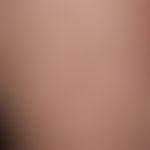Synonym(s)
HistoryThis section has been translated automatically.
DefinitionThis section has been translated automatically.
X-linked recessive ichthyosis due to mutation in the steroid sulfatase gene (almost exclusively affecting the male sex). Rarely collodion skin at birth. Disease symptomatology is often present at birth or breaks out in the first months of life. The course is progressive until puberty and then remains stationary.
You might also be interested in
Occurrence/EpidemiologyThis section has been translated automatically.
Worldwide & panethnic distribution. Incidence: 1/2000-6,000 male births. Prevalence in the general population is 1:4,000.
EtiopathogenesisThis section has been translated automatically.
X-linked recessive mutations of the steroid sulfatase gene(STS gene; gene locus: Xp22.3). The genetic defect is 90% a deletion of the STS gene. This leads to a deficiency of microsomal steroid sulfatase, an enzyme that removes sulfate residues, including cholesterol sulfate and dehydroepinandrosterone. This leads to an increase in cholesterol sulphate, e.g. in keratinocytes, fibroblasts and leukocytes. The gene mutation can also extend to neighboring genes, which can lead to more complex disease associations.
- XRI + Kallmann syndrome
- XRI + X-linked recessive form of chondrodysplasia punctata
- XRI+ Recessive epidermolysis bullosa dystrophica (Hernández-Martín A et al. 2010)
- XRI + cryptorchidism (20% of cases)
- XRI + ADHD (20-30% of cases of XRI patients)
- XRI + autism (25% of cases)
X-linked ichthyosis is frequently associated with atopic diseases(bronchial asthma, allergic rhinitis, allergic conjunctivitis, atopic dermatitis). The investigations revealed a microdeletion of the steroid sulphatase region (Xp22.3), an increased total IgE value and polysensitization. It appears that steroid sulfatase deficiency in ichthyosis plays a role in the development of atopic diseases (Harangi F et al. 2000).
ManifestationThis section has been translated automatically.
LocalizationThis section has been translated automatically.
ClinicThis section has been translated automatically.
Onset in infancy with relatively light-colored scaling, initially on the lower legs. Compared to autosomal dominant ichthyosis vulgaris, the scaling is more pronounced, the skin scales themselves are larger and relatively firm. With increasing age, the scaling becomes darker, more adherent and is later dirty gray, thick and coarse-fielded, rhombic. As with the autosomal dominant form, the large body flexion creases are usually omitted. The palms of the hands and soles of the feet show no increased line pattern. Comma-shaped, deep-seated corneal opacities are common. The accumulation of birth complications is also striking. Furthermore, around one in five of those affected have undescended testicles (cryptorchidism).
X-linked ichthyosis is often associated with atopic diseases(bronchial asthma, allergic rhinitis, allergic conjunctivitis, atopic dermatitis). The investigations revealed a microdeletion of the steroid sulphatase region (Xp22.3), an increased total IgE value and polysensitization. It appears that steroid sulfatase deficiency in ichthyosis plays a role in the development of atopic diseases (Harangi F et al. 2000).
LaboratoryThis section has been translated automatically.
The activity of the enzyme steroid sulfatase can be determined by a blood test, making this ichthyosis the only one to date that can be reliably detected by a simple blood sample.
Increase of cholesterol sulfate (approx. 10 times normal value) in blood cells and serum. Cholesterol in serum is decreased up to 50%.
Lipoprotein electrophoresis: Increased mobility of HDL and VLDL.
HistologyThis section has been translated automatically.
Retention hyperkeratosis with preserved, slightly widened stratum granulosum, distinct papillomatosis, 10-fold thickened interfollicular orthohyperkeratotic stratum corneum.
Electron microscopy: decreased number of keratinosomes.
DiagnosisThis section has been translated automatically.
External therapyThis section has been translated automatically.
Internal therapyThis section has been translated automatically.
- Adults: Initial 10-35 mg/day for 4 weeks, lowest possible maintenance dose after clinic (10-50 mg/day)
- In children, acitretin therapy only under strict consideration of benefit and risk: initial 0.5 mg/kg bw/day, maintenance dose: 0.1-0.2 mg/kg bw/day.
Progression/forecastThis section has been translated automatically.
Note(s)This section has been translated automatically.
LiteratureThis section has been translated automatically.
- Afzal S et al. (2020) A novel nonsense mutation in the STS gene in a Pakistani family with X-linked recessive ichthyosis: including a very rare case of two homozygous female patients. BMC Med Genet 21:20.
- Basler E, Grompe M, Parenti G et al. (1992) Identification of point mutations in the steroid sulfatase gene of three patients with X-linked ichthyosis. Am J Hum Genet 50: 483-491
- Bruno L et al. (2003) Recessive X-linked ichthyosis associated with hypertrophic pyloric stenosis: a chance occurrence? Clin Exp Dermatol 28: 74-76
- Csorsz K (1928) Ichthyosis (X-linked). Mschr Unfallheilk Med 2: 180
- DiGiovanna JJ et al (2003) Ichthyosis: etiology, diagnosis, and management. Am J Clin Dermatol 4: 81-95
- Harangi F et al. (2000) Occurrence of X-linked ichthyosis along with atopy. Orv Hetil 141:1301-1303.
- Hernandez-Martin A et al. (1999) X-linked ichthyosis: an update. Br J Dermatol 141: 617-627
- Hernández-Martín A et al. (2010) X-linked ichthyosis along with recessive dystrophic epidermolysis bullosa in the same patient. Dermatology 221:113-116.
- Ingordo V et al. (2003) Frequency of X-linked ichthyosis in coastal southern Italy: a study on a representative sample of a young male population. Dermatology 207: 148-150
- Kallmann FJ, Schönfeld WA, Barrera SE (1943) The genetic aspects of primary eunuchoidism. Am J Mental Deficiency 48: 203-236
- Lesca G et al. (2005) Xp22.3 microdeletion including VCX-A and VCX-B1 genes in an X-linked ichthyosis family: no difference in deletion size for patients with and without mental retardation. Clin Genet 67: 367-368
- Maya-Nunez G et al. (1999) An atypical contiguous gene syndrome: molecular studies in a family with X-linked Kallmann's syndrome and X-linked ichthyosis. Clin Endocrinol (Oxf) 50:157-162
- Orel H (1929) The inheritance of ichthyosis congenita and ichthyosis vulgaris. Z Kinderheilk 47: 312-340
- Shapiro L (1981) X-linked ichthyosis. Int J Dermatol 20: 26-31
- Shwayder T (2004) Disorders of keratinization: diagnosis and management. Am J Clin Dermatol 5: 17-29
- Wells RS, Kerr CB (1965) Genetic classification of ichthyosis. Arch Dermatol 92: 1-6
- Wells RS, Kerr CB (1966) Clinical features of autosomal dominant and sex linked ichthyosis in an English population. Br J Med 1: 947-950
Incoming links (11)
Corneal clouding; Eye diseases, skin changes; Ichthyosis nigricans; Ichthyosis vulgaris; Kallmann syndrome; Pseudoacanthosis nigricans; Recessive ichthyosis vulgaris; Steroid sulfatase deficiency; STS Gene; Wells-kerr-ichthyosis; ... Show allOutgoing links (19)
Acitretin; Allergic rhinitis; Atopic dermatitis (overview); Bronchial asthma (overview); Chondrodysplasia punctata; Collodion baby; Conjunctivitis allergica; Dystrophic epidermolysis bullosa ; Ichthyosis vulgaris; Kallmann syndrome; ... Show allDisclaimer
Please ask your physician for a reliable diagnosis. This website is only meant as a reference.













